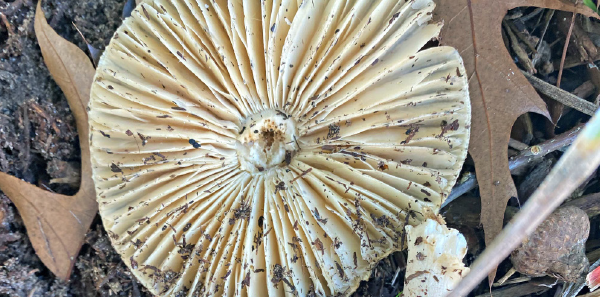
See Question
There are more than 1,000 kinds of Amanita mushrooms. Some cause significant toxicity or death. Others lack injurious chemicals. Many Amanita mushrooms look alike—their appearances are often similar, with white to greenish caps, white bulbous bases, rings around the mid-stalk, and white or pale gills that are free. Poisonous Amanita mushrooms can resemble other mushrooms that are benign and delicious and found in other parts of the world. How does the forager stay safe?
Explore This Issue
ACEP Now: Vol 39 – No 03 – March 2020Toxicity
The primary poison of the Amanita phalloides is α-amanitin. This poison is also found in other mushrooms (Galerina and Lepiota sp.). The toxin is not inactivated by cooking. Throwing one into a stew doesn’t make it better. It just poisons the whole pot.
About half a cap is enough to kill an adult. Historically though, the most common victims are children who taste interesting-looking plants, bold amateur mushroom hunters who “know this one is fine,” or immigrants who confuse these toxic mushrooms with edible species from their countries of origin.
Presentation and Mechanism
After ingesting Amanita phalloides, symptoms may start to occur around six hours later though sometimes can take up to a day, confounding the cause-and-effect link between a mushroom meal and the impending toxidrome.
After this latent period, the poisoning manifests with abdominal cramps, vomiting, and diarrhea.
The α-amanitin toxin inhibits RNA polymerase, which halts transcription of mRNA. In the liver—the first solid organ ingested toxins typically injure—hepatocytes stop synthesizing key proteins, which leads to cellular death and centrilobular hepatic necrosis.
Treatment
Hospital admission, laboratory monitoring of liver function, and coagulation studies are recommended for all suspected Amanita phalloides ingestions.
Initial management of a suspected Amanita phalloides ingestion is supportive and symptomatic with surveillance for hypoglycemia. Gastrointestinal detoxification is typically accomplished through activated charcoal, but gastric lavage may be considered if patients present promptly after an ingestion. Aggressive fluid hydration and electrolyte replacement for substantial gastrointestinal losses are also recommended.
Amatoxin is filtered through the kidney glomeruli with high urine concentrations, so maintaining a high urine output is thought to be beneficial.
Many therapies have been suggested and met with variable therapeutic results. Published reports describe the use of milk thistle extract silibinin by IV or orally, high-dose penicillin G, and N-acetylcysteine due to its free-radical-scavenging properties and limited side effects. Vitamin C and cimetidine have been used but have limited clinical data to support their routine use.
Extracorporeal extraction can remove amatoxin but is limited due to low serum concentrations. Liver transplants are a last resort in cases of irreversible hepatotoxicity and impending death.
How Do You Solve This Puzzle Safely?
Follow DNEWM (Do Not Eat Wild Mushrooms).
Go mushroom hunting to take pictures only (no tasting!)—then make it a game to see if you can identify what you found. There are great resources online.
Make friends with an expert mycologist who’s not easily annoyed.
Find a good online reference. Here are two options for all things Amanita to get you started:
- www.amanitaceae.org
- www.amanitaceaethejournal.org
Back to my story: I sent these photographs to a new friend and expert consultant mycologist. His best guess (using my pictures and description) was that it probably belonged to “Amanita lavendula group” and was therefore nontoxic. “However,” he added, “I wouldn’t eat it anyway, just to be safe.”
Great advice!
Pages: 1 2 | Multi-Page






No Responses to “Beware Certain Varieties of Amanita Mushrooms”